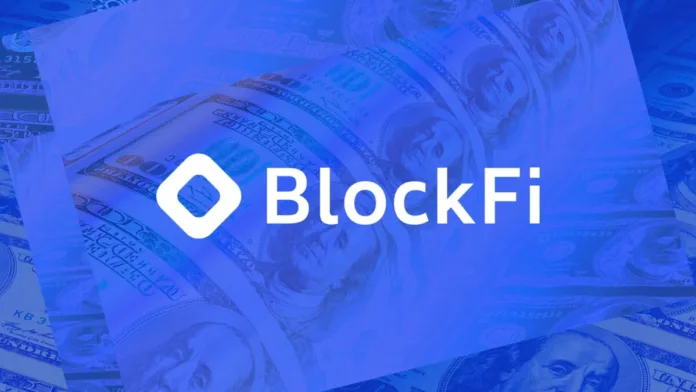Key Takeaways
- BlockFi, a prominent crypto lender, filed for Chapter 11 bankruptcy in November 2022 due to its substantial exposure to the collapse of FTX and Alameda Research.
- The company’s repayment plan, which aimed to settle debts with approximately 10,000 creditors, received 90% approval from voting creditors.
- BlockFi has partnered with Coinbase to facilitate the distribution of funds to eligible clients, with the first BlockFi interim distributions set to begin this month.
- Non-US clients are currently unable to receive funds due to applicable regulatory requirements.
- BlockFi estimates that BIA holders can expect to recover anywhere from 39.4% to 100% of their funds, depending on the outcome of the FTX bankruptcy proceedings and the value of BlockFi’s equity in Robinhood.
- The challenges faced by BlockFi reflect the broader struggles of the cryptocurrency industry in the aftermath of major failures like FTX, underscoring the need for robust risk management and regulatory compliance.
- The commencement of BlockFi refund through Coinbase represents a critical milestone in the industry’s recovery process, demonstrating the potential for collaborative efforts to provide structured solutions for returning customer funds.
The cryptocurrency industry has faced significant turmoil in recent months, with the collapse of major players like FTX shaking the foundations of the ecosystem. Amidst this upheaval, one prominent platform, BlockFi, has been navigating the complex waters of bankruptcy proceedings, working diligently to return funds to its affected customers. In a significant development, BlockFi has now announced that it will commence its first BlockFi interim distributions through a Coinbase partnership, providing much-anticipated relief to its creditors.
BlockFi’s Downfall and the FTX Collapse
BlockFi, a once-thriving crypto lender, fell victim to the contagion caused by the implosion of FTX in November 2022. The company had substantial exposure to FTX and its trading arm, Alameda Research, with over $1.2 billion in assets tied up between them. When FTX and Alameda went under due to FTX fraud, BlockFi followed suit, citing liquidity issues. The lender filed for Chapter 11 bankruptcy protection on November 28, 2022, listing over 100,000 creditors.
The Blame Game
In the ensuing bankruptcy restructuring plan, BlockFi executives largely attributed the company’s woes to the actions of FTX and Alameda. Zac Prince, BlockFi’s CEO, even took the stand as a government witness during Sam Bankman-Fried’s criminal trial, pointing to the FTX founder’s actions as the primary reason for BlockFi’s downfall.
Creditor Approval and the Restructuring Plan
Despite the challenges, BlockFi’s restructuring plan, which aimed to settle debts with approximately 10,000 creditors, received 90% approval from voting creditors. This marked a significant milestone in the company’s journey towards recovery and the eventual return of customer withdrawals.
Related Read: FTX Fraud: Nishad Singh and Gary Wang, Former FTX executives to be sentenced on Oct 20 and Nov 21
Navigating the Bankruptcy Proceedings
As company emerged from bankruptcy in October 2023, nearly a year after filing, the focus shifted to the intricate process of returning digital currency holdings. The company’s bankruptcy exit plan outlined a roadmap for this endeavor, with the initial step being the commencement of BlockFi crypto distributions.
BlockFi and Coinbase Partnership
To facilitate these distributions in an efficient and systematic manner, BlockFi announced a Coinbase partnership news. The collaboration aims to provide a structured approach for returning assets to affected users, navigating the complexities of the crypto distribution process.
Notification and Eligibility
According to BlockFi news, eligible clients will be notified via the email associated with their BlockFi account. The company emphasized the importance of ensuring that clients’ email addresses are up-to-date to avoid any delays in receiving notifications about their distributions.
Regulatory Hurdles for Non-US Clients
Unfortunately, the BlockFi July distributions will not be accessible to non-US clients due to applicable regulatory requirements. This limitation reflects the intricate legal landscape that BlockFi must navigate in its efforts to fulfill its obligations to its global customer base.
The Road to Recovery
As BlockFi takes the crucial step of initiating BlockFi crypto withdrawals through Coinbase, it marks a significant milestone in the company’s journey towards recovery and the restoration of customer trust.
Settlement Agreement with FTX and Alameda
In March 2024, it reached a tentative agreement with the estates of FTX and Alameda Research, worth $875 million. This settlement agreement resolved BlockFi’s claims against FTX, which totaled around $1 billion, and also resulted in FTX dropping “millions of dollars in avoidance claims and counterclaims” against BlockFi.
Estimated Recovery Rates
According to company’s estimates, BlockFi Interest Account (BIA) holders can expect to recover anywhere from 39.4% to 100% of their funds, depending on the outcome of the FTX bankruptcy proceedings and the value of BlockFi’s equity in Robinhood. Private Clients and Retail Loan customers may see higher recovery rates, potentially reaching full recovery.
Ongoing Challenges
Despite these positive developments, the exact timing and amounts of the distributions remain uncertain, as they are tied to the complex legal proceedings surrounding FTX’s bankruptcy. Furthermore, the challenges faced by crypto companies in the aftermath of major industry failures, such as meeting regulatory requirements and fulfilling obligations to their users, continue to be a pressing concern.
The Importance of Transparency and Accountability
Throughout the bankruptcy proceedings and the crypto distribution news, BlockFi has emphasized the importance of transparency and accountability. The company has taken steps to ensure that its communications with clients are exclusively channeled through official email channels, social media, and the claims agent, Kroll.
In the past, company has experienced instances of fraudulent activity, where some individuals received fraudulent emails that appeared to be legitimate, deceiving them into believing their remaining balances would be immediately withdrawn. By implementing strict communication protocols, BlockFi aims to prevent such scam attempts and restore trust in the distribution process.
The exclusion of non-US clients from the initial distributions highlights the significance of navigating the complex regulatory landscape. Company’s efforts to comply with applicable laws and regulations demonstrate its commitment to operating within the boundaries of the law, even if it means temporarily withholding funds from certain clients.
Conclusion
The announcement of BlockFi crypto distributions through Coinbase marks a significant step forward in the company’s journey towards recovery and the restoration of customer trust. Amidst the broader challenges facing the cryptocurrency industry, BlockFi’s efforts to navigate the complex bankruptcy proceedings and prioritize transparency and accountability serve as a testament to the resilience and adaptability required in this dynamic landscape.
As the distributions commence in batches and the legal proceedings surrounding FTX’s bankruptcy continue to unfold, the outcomes will have far-reaching implications for BlockFi’s customers and the broader crypto community. The industry’s ability to learn from these experiences and implement robust risk management strategies will be crucial in shaping a more resilient and trustworthy future for digital assets.
FAQs
What led to BlockFi’s bankruptcy filing in November 2022?
BlockFi’s substantial exposure to the collapse of FTX and Alameda Research led to its Chapter 11 bankruptcy filing.
How will eligible clients be notified about the BlockFi interim distributions?
Eligible clients will be notified via the email associated with their BlockFi account to avoid delays.
What is the estimated recovery range for BlockFi Interest Account (BIA) holders?
BIA holders can expect to recover anywhere from 39.4% to 100% of their funds based on various factors.
What are the regulatory limitations affecting non-US clients’ access to distributions?
Non-US clients are currently unable to receive funds due to applicable regulatory requirements.













